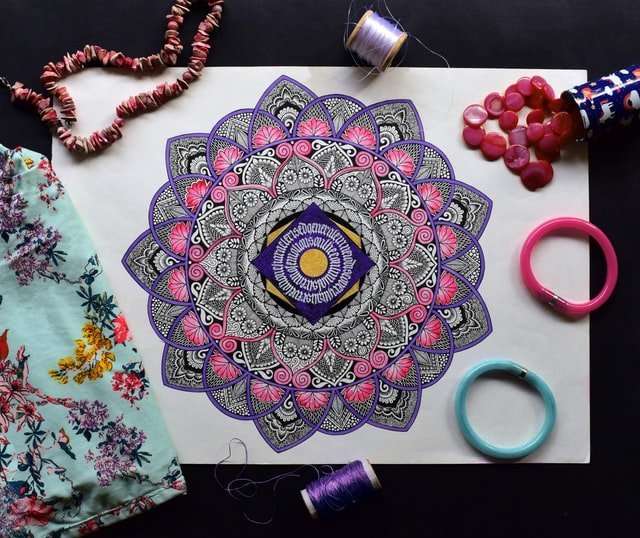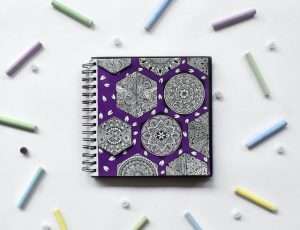Hello, everyone. I’m new to blogging and very excited for this opportunity to share my art and process with you. I’ll be posting a lot more in the future as I get going and am grateful for your support!
Warli painting was created by Adivasis, or indigenous people of India, who live in the state of Maharashtra. It is one of the most famous art styles of India, but many are unfamiliar with its rich history and process. This blog is meant to shed light on my own art practice and the Warli community at large, including technical processes, themes and motifs, etc.
The name Warli comes from the language of the Adivasis and literally means “earth.” The traditional technique is based on paintings made in soil alongside rivers and lakes in small fishing villages. Today, artists have adapted this style to canvas board and paper due to a lack of access to soil pigments.
By sharing my own journey through this style I hope to share rich insights into Warli art for both those that are already familiar with it as well as those just beginning their exploration into Indian art.
From a distance, it’s easy to see the beauty in Warli Art. But, the closer you look, the more you begin to appreciate its complexity. These paintings are not just a collection of lines and dots and shapes. They are each a story or even a history that is shared with others through symbols and patterns.
This blog is here to share the art and process of Warli painting with the world. Here you will find stories behind each painting and videoes detailing how they are created. We hope this will give you a little insight into this incredible art form.
The Warli Tribe create beautiful art out of the simplest of things. They use mud and seeds, sticks and stones to make unique and interesting paintings. This blog will talk about the history of the Warli art, as well as the process that goes into creating these pieces. It will also talk about the various materials used, as well as discuss some of the myths behind the Warli Tribe.
Tribal art is a very popular genre in India, but it is not often discussed outside of academic circles. Hopefully this blog will change that, and help to bring this fascinating art style to a wider audience!
Warli art is not just a hobby for the Warli tribespeople; it is an integral part of their culture and everyday life. While people in other parts of India are learning more about technology, furniture making, and other manual skills, many members of the Warli tribe are learning how to create art, just like their ancestors did. The Warli Tribespeople have been creating their own art for centuries. Their paintings are found on a variety of mediums such as cloth, rocks and walls. Some tribespeople even paint their bodies with strange designs.*
Warli art, an ancient form of Indian art that was believed to have been lost, was rediscovered in the 1980’s by a group of artists and anthropologists in the small village of Warli in Maharashtra, India. The art is all hand-painted on walls and floors, making it very difficult to preserve. In order to maintain the integrity of this rare art form, the Warli people have chosen not to share their techniques with anyone outside the community. All of the artists are illiterate and pass their techniques from one generation to another orally.
Imagine my surprise when I discovered that a family living just outside my home village makes this beautiful art style! We have been honored to be allowed into their homes and witness this ancient art form first hand. This blog is a place where I hope to share our experiences with other people interested in learning more about Warli Art.
At this point it is safe to say that most of you know that Warli art is one of the major art forms in India. A lot of you have also seen the famous Warli art work done by the Warlis, a tribal group that lives in the Thane district of Maharashtra, India.
Over the years, many people have tried to learn how they make their beautiful art and there are several who have succeeded in learning from them. However, not many people know that Warli art is not just about painting on walls. It is all about techniques like scratchboard and reverse painting and more, and it is always fun to learn about new techniques.
The author of this blog is a person whose love for Warli art is nothing short of immense. He has been practicing this art for over two decades now and his knowledge about it is boundless. On this blog he shares everything he knows about Warli painting and also introduces us to some new and interesting techniques.’
Warli art is a style of painting created by the Warli tribe of India. It is considered to be one of the oldest forms of Indian painting. Warli art consists primarily of paintings on the walls of houses, depicting daily life and rituals. While closely related to the Kalamkari tradition, Warli paintings are more abstract in nature and unique in their portrayal of figures with elongated bodies and multi-colored clothing.
The Warli art form is believed to have originated in the 12th century, when the Warlis were part of the Deccan kingdom. The paintings depict local customs, traditions, religious festivals and beliefs through symbols and abstract images. The colors used in these paintings come from local minerals, plants and vegetables.
The art form is still practiced today by members of the tribe. A popular tourist destination, tourists can purchase decorated products directly from artists at the Pandharpur market near Pune in Maharashtra or at various gift shops across India. The Warli Tribe Museum located at Waghali village near Alibaug also displays some examples of Warli art.*
I am a professional freelance artist. I have been painting since I was 5 years old. I use my art to express myself, to let my feelings out. In my early years, I was very into cartoons. My favorite characters were Bugs Bunny, Mickey Mouse and Donald Duck. My dad would draw really well and he taught me how to draw, not just “follow the lines”, but how to think about objects in 3D space and how to create a story in my drawings.
An important part of the process for me is thinking about what colors will make the drawing more beautiful or more interesting. For example, if there is a character eating an apple in the picture, I have to decide what color apple do they like best? Is it red or green? Or maybe they like both kinds? Do they eat them raw or cooked? Do they like bananas too? Maybe they are allergic to bananas!
Another important part of the process is thinking about what kind of background will make the picture look better. If it’s sunny outside, do my characters wear sunglasses? If it’s raining outside, do they put on rain boots? If it’s cold outside do they wear jackets or coats? There are so many things to think about!
I love illustrating animals because I


